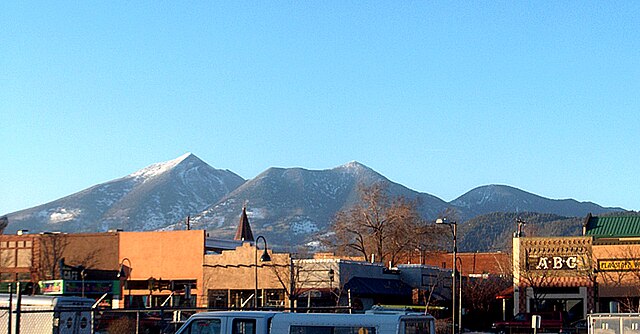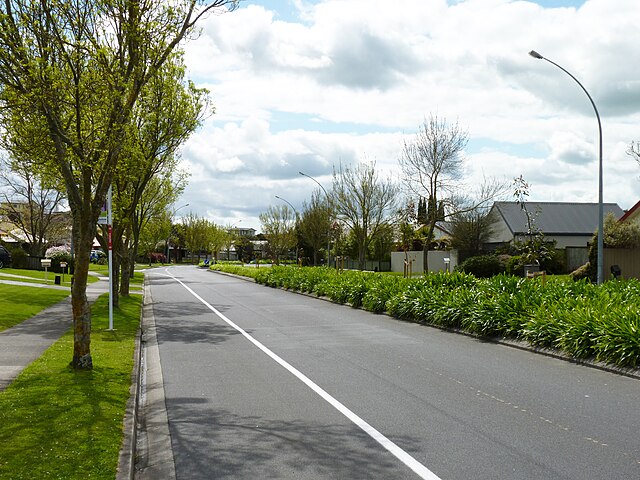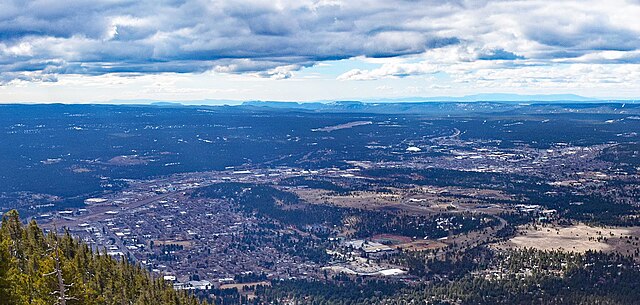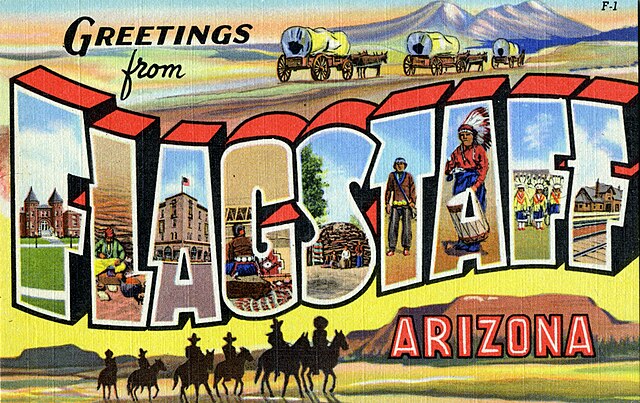When you think of Arizona weather, your mind probably jumps to scorching desert heat and endless sunshine. But nestled in the northern mountains of the Grand Canyon State lies Flagstaff – a city that completely defies Arizona’s typical weather reputation. Have you ever wondered what makes this mountain town so climatically different from the rest of the state?
Flagstaff’s weather is like discovering a hidden gem in your own backyard. While Phoenix residents are cranking up their air conditioning, Flagstaff locals might be building snowmen or enjoying a crisp mountain breeze. This dramatic difference isn’t just coincidence – it’s the result of elevation, geography, and unique weather patterns that make Flagstaff one of Arizona’s most climatically diverse destinations.
Understanding Flagstaff’s Unique Climate
Flagstaff sits pretty at 7,000 feet above sea level, making it one of the highest major cities in the United States. This elevation is the secret sauce behind its distinctive weather patterns. Think of elevation like nature’s air conditioning system – the higher you go, the cooler it gets.
The city experiences what meteorologists call a “humid continental climate,” which is fancy talk for having four distinct seasons with significant temperature variations. Unlike the desert cities below, Flagstaff receives substantial precipitation throughout the year, including snow that would make a Minnesota resident feel right at home.
High Elevation Impact on Weather Patterns
Elevation affects weather in fascinating ways. For every 1,000 feet you climb, the temperature drops by about 3.5 degrees Fahrenheit. Since Flagstaff sits nearly 6,000 feet higher than Phoenix, it’s consistently 20-25 degrees cooler than the desert floor. It’s like having a built-in climate control system that Mother Nature installed millions of years ago.
This elevation also means Flagstaff receives more precipitation. Mountains force air masses upward, causing them to cool and release moisture – a process called orographic lifting. The result? Flagstaff gets about 23 inches of precipitation annually, compared to Phoenix’s measly 8 inches.
Four Distinct Seasons in the Desert State
While most of Arizona experiences two main seasons (hot and less hot), Flagstaff enjoys the full seasonal symphony. Each season brings its own personality, weather patterns, and outdoor opportunities. It’s like having four different cities rolled into one, each with its own climate characteristics and charm.
Spring Weather in Flagstaff (March-May)
Spring in Flagstaff is nature’s way of showing off. As winter’s grip loosens, the city transforms into a landscape painter’s dream. But don’t be fooled – spring weather here can be as unpredictable as a teenager’s mood.
Temperature Ranges and What to Expect

Spring temperatures in Flagstaff are wonderfully moderate, with daytime highs ranging from the mid-50s in March to the comfortable 70s by May. Nighttime temperatures can still dip below freezing in early spring, so packing layers is essential. Think of dressing for spring in Flagstaff like preparing for a first date – you want to be ready for anything.
March averages around 54°F for highs and 24°F for lows, while May warms up to about 72°F during the day and 36°F at night. The temperature swings can be dramatic – you might need a winter coat in the morning and shorts by afternoon.
Spring Precipitation Patterns
Spring brings a mix of rain and occasional late-season snow. March and April can still see snowfall, though it typically melts quickly. The precipitation patterns are relatively gentle, with spring being one of the drier times of year before the summer monsoons arrive.
Best Activities for Spring Weather
Spring weather creates perfect conditions for hiking, with comfortable temperatures and blooming wildflowers. The snow has usually cleared from most trails, but higher elevations might still require some preparation. It’s an ideal time for photography, camping, and exploring Flagstaff’s numerous outdoor attractions without the extreme temperatures of other seasons.
Summer in Flagstaff: A Cool Mountain Escape (June-August)
While the rest of Arizona bakes in triple-digit heat, Flagstaff becomes an oasis of comfort. Summer here is what summer should feel like everywhere – warm days, cool nights, and plenty of outdoor opportunities without the risk of melting into the pavement.
Why Flagstaff Stays Cool in Summer
Summer highs in Flagstaff typically range from the mid-70s to low 80s – temperatures that would make Phoenix residents weep with joy. The elevation acts like nature’s air conditioning, keeping temperatures pleasant even during the hottest months. It’s like having a personal climate bubble protecting you from Arizona’s legendary summer heat.
Nighttime temperatures rarely exceed the 50s, meaning you’ll actually want a blanket at night. Many visitors are shocked to discover they need a jacket for evening activities in July. It’s one of the few places in Arizona where you can enjoy a campfire in summer without feeling like you’re adding insult to injury.
Monsoon Season and Summer Storms
Flagstaff’s summer monsoon season, typically running from July through September, brings dramatic afternoon thunderstorms that are both spectacular and refreshing. These storms roll in like nature’s own fireworks show, complete with lightning displays that illuminate the mountain landscape.
The monsoons can dump significant amounts of rain in short periods, sometimes causing flash flooding in washes and low-lying areas. But they also bring relief from any heat buildup and create some of the most beautiful cloud formations you’ll ever see.
Summer Outdoor Activities and Weather Considerations
Summer weather makes Flagstaff a premier destination for hiking, camping, mountain biking, and outdoor festivals. The comfortable temperatures mean you can be active during peak daylight hours without worrying about heat exhaustion. Popular activities include exploring the Arizona Trail, visiting the Grand Canyon, and attending outdoor concerts and festivals.
Fall Weather: Nature’s Color Show (September-November)
Fall in Flagstaff is like watching the world’s most beautiful transition unfold in slow motion. The aspen trees turn golden, the air becomes crisp, and the weather settles into some of the most pleasant patterns of the year.
Temperature Drops and Changing Conditions

Fall temperatures gradually decrease from September’s mild 70s to November’s chilly 50s for daytime highs. Nighttime temperatures can drop into the 20s by November, with the first freeze typically occurring in late September or early October. The weather becomes increasingly variable, with warm, sunny days followed by sudden cold snaps.
September still feels like summer with highs around 72°F, but by November, you’re looking at highs of 52°F and lows that can reach 20°F. It’s a gentle slide into winter that gives you plenty of time to adjust your wardrobe and outdoor plans.
Fall Foliage and Weather Patterns
The changing weather patterns trigger one of Arizona’s most spectacular natural displays – the changing of the aspen leaves. Cooler nights and shorter days signal the trees to begin their color transformation, creating golden corridors through the forest that attract photographers and leaf-peepers from around the world.
Fall weather is generally stable with less precipitation than other seasons, making it ideal for outdoor activities and sightseeing. The clear, crisp air provides excellent visibility for mountain views and stargazing.
Winter in Flagstaff: Snow and Skiing (December-February)
Winter transforms Flagstaff into a legitimate winter wonderland that would fit right in with mountain towns in Colorado or Utah. Snow-covered pines, frozen lakes, and skiing opportunities make this season magical for winter sports enthusiasts.
Snowfall Expectations and Patterns
Flagstaff receives an average of 100 inches of snow annually, with most falling between December and March. Some years bring significantly more – the record snowfall for a single season was over 210 inches. Snow can start falling as early as October and occasionally lasts into May at higher elevations.
The snow here isn’t just a dusting that melts by noon. Flagstaff gets real, accumulating snow that sticks around for weeks or months. The city is well-equipped to handle snow removal, but winter driving requires preparation and caution.
Winter Temperature Extremes
Winter daytime highs typically range from the 40s to low 50s, while nighttime temperatures often drop into the teens or single digits. The record low temperature in Flagstaff was -30°F, recorded in 1937. Modern winters rarely see such extremes, but subzero temperatures aren’t uncommon.
The temperature swings can be significant – a sunny winter day might reach 50°F, but the same night could drop to 15°F. It’s like living in a climate that can’t make up its mind, keeping residents and visitors on their toes.
Winter Sports and Weather Safety
Winter weather creates excellent conditions for skiing at Arizona Snowbowl, snowshoeing, cross-country skiing, and other winter activities. However, the combination of elevation and cold temperatures requires proper preparation. Altitude can affect how your body responds to cold, and winter storms can develop quickly in the mountains.
Monthly Weather Breakdown
Understanding Flagstaff’s weather month by month helps you plan the perfect visit or move. Each month has its own personality, challenges, and opportunities.
Hottest and Coldest Months
July is typically the warmest month with average highs around 81°F, though temperatures rarely become uncomfortable thanks to the elevation. January claims the title of coldest month, with average highs of 43°F and lows around 16°F.
The temperature range throughout the year spans about 65 degrees from the coldest winter nights to the warmest summer days – a variation that keeps life interesting and provides seasonal diversity rare in Arizona.
Wettest and Driest Periods
August typically brings the most precipitation thanks to monsoon activity, while May and June are usually the driest months. The wet season runs roughly from July through September, followed by a dry period from October through June with some winter snow precipitation.
This precipitation pattern means water restrictions are rare, and the landscape stays relatively green year-round compared to desert areas of the state.
How Flagstaff Weather Compares to Other Arizona Cities

The contrast between Flagstaff’s weather and other Arizona cities is dramatic enough to make you question whether they’re in the same state. The differences go far beyond just temperature – they encompass humidity, precipitation, and seasonal variation.
Flagstaff vs Phoenix Weather
The weather difference between Flagstaff and Phoenix is like comparing Alaska to Hawaii. While Phoenix bakes in 115°F summer heat, Flagstaff enjoys pleasant 80°F days. When Phoenix residents are running from air-conditioned car to air-conditioned building, Flagstaff locals are hiking, camping, and actually enjoying being outdoors.
Winter provides an even starker contrast. Phoenix enjoys mild 70°F days perfect for golf and outdoor dining, while Flagstaff residents are skiing and building snowmen in below-freezing temperatures.
Flagstaff vs Tucson Climate Differences
Tucson, sitting at about 2,400 feet elevation, falls somewhere between Phoenix and Flagstaff climatically, but still maintains a desert character. Tucson’s average summer highs reach the low 100s compared to Flagstaff’s 80s, and winter lows in Tucson rarely drop below 40°F while Flagstaff regularly sees temperatures in the teens.
The precipitation differences are equally dramatic. Tucson receives about 12 inches annually, while Flagstaff gets nearly twice that amount, plus substantial snowfall that Tucson never sees.
Planning Your Visit: Best Times to Experience Flagstaff Weather
Timing your Flagstaff visit depends entirely on what you want to experience and your tolerance for different weather conditions. Each season offers unique advantages and some challenges.
Ideal Weather for Outdoor Activities
Summer (June-August) provides the most consistently pleasant weather for hiking, camping, and outdoor festivals. Fall (September-November) offers comfortable temperatures with stunning fall colors and generally stable weather patterns. Spring can be wonderful but more unpredictable, while winter is perfect if you’re seeking snow sports and winter activities.
For photography and sightseeing, fall and early summer provide the best combination of good weather and scenic beauty. The clear, crisp air of fall offers exceptional visibility for mountain and canyon views.
Seasonal Tourism Considerations
Summer is peak tourist season, meaning crowds and higher prices but also the most services and activities available. Fall brings moderate crowds with excellent weather, while spring offers fewer people but more variable conditions. Winter is least crowded except around ski areas, offering the best deals on accommodations but requiring winter driving skills.
Consider that many high-elevation attractions and roads may be closed in winter due to snow, while summer heat in lower elevations (like the Grand Canyon’s inner gorge) can be extreme even when Flagstaff is comfortable.
Weather-Related Safety Tips for Flagstaff Visitors
Flagstaff’s mountain location and elevation create unique safety considerations that desert-dwelling Arizonans and visitors from low-elevation areas might not expect.
Altitude Sickness and Weather Adaptation
The 7,000-foot elevation can affect some visitors, especially those coming from sea level. Symptoms of altitude sickness include headaches, nausea, and fatigue. The thinner air also means you’ll dehydrate faster and sunburn more easily, even in cooler temperatures.
Take time to acclimate, drink plenty of water, and don’t overexert yourself during your first day or two. The combination of elevation and changing weather conditions can catch unprepared visitors off guard.
Driving in Flagstaff Weather Conditions
Winter driving in Flagstaff requires preparation and caution. Snow and ice are real concerns, and many visitors aren’t prepared for mountain winter driving conditions. Carry emergency supplies, check weather conditions before traveling, and consider that Interstate 40 and other major routes can close during severe storms.
Summer monsoons can also create hazardous driving conditions with sudden heavy rain, flash flooding, and reduced visibility. Never attempt to drive through flooded roads – turn around and find an alternate route.
Conclusion
Flagstaff’s weather is one of Arizona’s best-kept secrets, offering four distinct seasons, comfortable temperatures, and outdoor opportunities that defy the state’s desert reputation. From snow-covered winters perfect for skiing to pleasant summers ideal for hiking, Flagstaff provides a climate refuge that attracts visitors and residents seeking something different from typical Arizona weather.
Whether you’re planning a weekend getaway, considering a move, or simply curious about this mountain oasis, understanding Flagstaff’s weather patterns helps you make the most of what this unique city offers. The elevation, seasonal variation, and natural beauty combine to create weather patterns that make Flagstaff a truly special place in the American Southwest.
The next time someone tells you Arizona is nothing but desert heat, tell them about Flagstaff – where you can build a snowman in January and hike comfortable mountain trails in July, all while enjoying some of the most beautiful weather in the Southwest.
Frequently Asked Questions
Q: Does it really snow in Flagstaff, Arizona?
A: Yes, Flagstaff receives an average of 100 inches of snow annually, with snow typically falling from December through March. Some years see significantly more snowfall, making it one of the snowiest cities in Arizona.
Q: What’s the best time of year to visit Flagstaff for pleasant weather?
A: Summer (June-August) and fall (September-November) offer the most consistently pleasant weather. Summer provides comfortable temperatures in the 70s-80s, while fall offers mild days with beautiful foliage and clear skies.
Q: How much cooler is Flagstaff compared to Phoenix?
A: Flagstaff is typically 20-25 degrees cooler than Phoenix year-round due to its 7,000-foot elevation. While Phoenix might reach 115°F in summer, Flagstaff rarely exceeds 85°F during the same period.
Q: Can you swim and do summer activities in Flagstaff?
A: While Flagstaff has lakes and outdoor activities, swimming is limited due to cooler water temperatures even in summer. The area is better known for hiking, camping, mountain biking, and other land-based outdoor activities that take advantage of the comfortable mountain climate.
Q: Do I need special equipment or clothing for Flagstaff weather?
A: Yes, especially in winter when snow gear and warm clothing are essential. Year-round, layers are recommended due to significant temperature swings between day and night. Summer visitors should bring light jackets for cool evenings, while winter visitors need full winter gear including warm coats,

